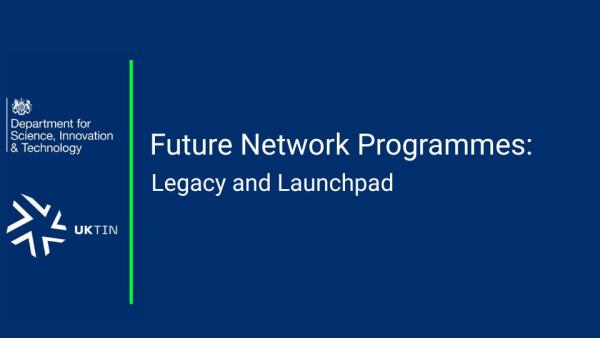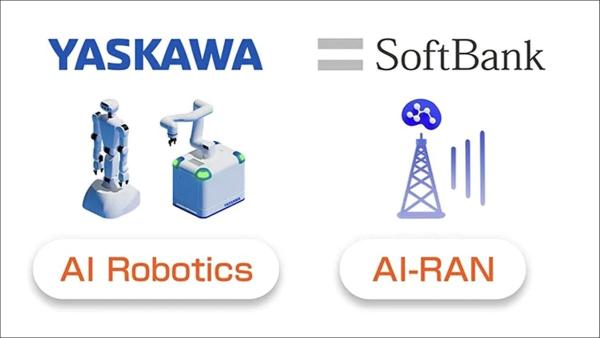
What is the ITU and what does ITU-T SG15 do?
The International Telecommunications Union (ITU) is the original telecoms standards body. Formed over 150 years ago, it was, until around 40 years ago, the only significant telecoms standards body. Since then, the IEEE with Ethernet and Wi-Fi, the IETF with the Internet, and 3GPP with mobile have also emerged as major standards bodies in their specific fields. In these areas, ITU tends now to play a less significant role in the development of detailed technical standards, however it still can be important for more strategic aspects such as coordination of regulation.
The ITU is split into three divisions. ITU-R deals with radio aspects, ITU-T deals with general standards aspects of telecoms, and ITU-D is concerned with the deployment and availability of telecoms in less developed countries. For mobile and satellite, ITU-R is the primary body which coordinates the allocation of spectrum across the globe, key to each new generation of mobile, including 6G.
ITU-T still covers a broad spectrum of standards but where other bodies such as IETF carry out the main work of developing technical specifications, ITU-T focuses on aspects such coordinating global policy and direction. However, optics and transmission networking is one area where no other body has really taken over ITU-T historic role of technical specification. There are several other significant bodies, such as IEEE802.3 (mainly intra-building interfaces), the Optical Interworking Forum (OIF), the Broadband Forum (BBF), the Metro Ethernet Forum (MEF), and Open Networking Foundation (ONF and now part of Linux Foundation Networking), but the ITU-T study group SG15 -responsible for access and transmission networking including optics - is still a major focus point for technical standards. In addition, ITU-T SG15 covers standards for the maintenance and distribution of very accurate time (timing and synchronisation) as this is very closely coupled to optics and transmission technologies. Optical equipment and other equipment within the scope of ITU-T SG15 will normally quote conformance to their specifications (strictly called ‘Recommendations’ rather than standards).
ITU-T SG15’s work is organised in to working parties – WP1 covers access systems, WP2 optical fibre, optical components and submarine systems, while WP3 covers ‘transport networking’ architecture (the management and networking of bulk capacity provided by optical transmission), terrestrial long distances systems both optical and packet, management interfaces for transport networking, and timing/synchronisation. Within the working parties, the work is further organised under ‘questions’. Formally, every four years the governing ITU-T plenipotentiary meeting sets ‘questions’ for the study groups to provide answers to in the next ITU-T plenipotentiary. Unlike other SDOs where work items tend to set very specific scopes and time limited terms, these ‘questions’ tend to be more open ended.
So, if your technology is optics in access, metro, of long distance or the management of such networks, or highly accurate clocks (including various varieties of atomic clocks) and the distribution of time and synchronisation, ITU-T SG15 is the key body.
Hot Topics at this Geneva Meeting
ITU-T SG15 covers a fairly broad scope and most full meetings, including this one, span two weeks. I was able to attend the first three days of the second week when the work of the access systems working party (WP1) and the core systems and transport networking working party (WP3) was coming together. I was not able to attend any of the WP2 work, but that doesn’t mean there aren’t any ‘hot topics’ going on there!
I’ve highlighted a number of key topics in WP1 and WP3 below but start with a more general issue presented to ITU-T SG15,concerning the way optical networks can and should support and converge with 6G mobile (IMT-2030 as it is called in ITU-R).
IOT2030
At the instigation of many Chinese organisations, plus a number of others, SG15 has agreed to produce a Technical Paper (TP) on ‘International Optical Communications for 2030 and Beyond’. The motivation comes from the IMT-2030 initiative in ITU-R creating 6G mobile, noting that 6G will rely on exploiting new optical technology developments and associated standards.
The vision for this TP is based on, complementary to, and similar to, recommendation ITU-R M.2160 which sets out the vision for 6G and has been the starting point for 6G work in 3GPP.
As I noted in previous downloads from 3GPP meetings, countries in east Asia, and notably China, have a more ‘top down’ approach to 6G than North America or Europe, and this work item proposal undoubtedly reflected these regional differences.
That said, the conscious converging and aligning of mobile architecture and standards with optical networking architecture and standards is clearly a good thing. With 5G, this did not really happen properly, especially with timing and synchronisation, until a late stage, resulting in quite a lot of technical confusion.
However, there is also a danger that too much is read into what is only a broad and indicative framework document, and some factions could attempt to force an overly rigid interpretation of the framework. This was essentially the case when ITU-R M.2160 and its six point ‘wheel diagram’ was taken into 3GPP.
The work has been directed at Q2 for WP1, Q6 for WP2, and Q12 for WP3, with Q12 taking an overall lead. As well as direct work in the WPs, it will be the subject of a further special Workshop at the ITU-T SG15 interim meeting in Paris in June 2025.
Question 2 – Optical Access Systems (WP1)
Cost effective optical components have been gradually improving in performance, especially in their bandwidth capability. Successive generations of passive optical networks (PONs), the primary optical access technology, with increasing capacity have been standardised within Q2 over the years.
The surprise is that the latest optical devices are not the primary points of focus in the standards discussion. The ever- present issue is backwards compatibility with previous generations of PON, as deploying fresh access fibre is normally financially prohibitive. There is also the constant ironing out of little niggles in the detailed specification, especially as automated negotiation of configuration and automated maintenance become ever more sophisticated.
While most PON deployments are currently on 10Gbit/s PON (XG-PON), supplanting the previous 1Gbit/s GPON, Q2 already has standards for PON at 4x10Gbit/s (NG-PON2) using WDM and 50Gbit/s (50G-PON) based on a single carrier, even if any mass deployment of such systems is not yet cost effective. A certain part of the meeting time was dedicated to refining these standards.
The focus of a great number of contributions, and undoubtedly the ‘hot topic’ was a new Supplement on ‘Very High Speed’ PONs (VHS-PONs), looking at speeds well above that of 50G-PON (a supplement is generally informative and sits alongside the series of recommendations that it supplements). This supplement is collecting “system requirements and characteristics” for such PONs and identifying candidate technologies. This was also a significant topic of discussion in last year’s ECOC meeting as I reported in that blog.
There’s clearly a lot of energy and opportunity here, however, as a practical observation, it’s likely to be quite a long time (>10 years?) before these systems are commercial mainstream.
Question 12 – Optical Transport Architecture (WP3)
This is one of those groups which is often in the background but whose work is quietly influential. Amongst other things, Q12 is responsible for defining the ‘functional architecture’ of transport networks (access, backhaul, and core). The key principle of this functional architecture is the specification of all the essential components in an way that retains sufficient specification to enable interworking but allows the maximum possible freedom for implementation. This functional architecture is then used as the basis for the optical component specification in Q6, the interface specifications in Q2, Q10, and Q11, and most particularly, the management interfaces in Q14.
This work started many years ago for SDH technology - the first remotely configurable transport technology - and this functional architecture been successfully extended many times to cover general WDM networking including Optical Transport Network (OTN) and a wide range of packet transport networks (including Carrier Ethernet, MPLS traffic engineering, and tunnelling solution such as SD-WAN). Its success is that by maximising commonality and taking a ‘minimally sufficient’ approach to specification, the same configuration and management systems can manage all the technologies without significant modification.
It is also worth noting that the Software Defined Networking (SDN) management interface in the Open Networking Foundation (ONF), which started as a completely independent initiative, has developed its specification directly based on this work in Q12.
The current work in Q12 on this subject is:
- extending the functional architecture to separate out and separately define the optical media layer, and to explicitly include a number of passive optical technologies of growing importance such as free space optics, arrayed wavelength gratings (AWGs), fibre switching technologies, and the coexistence of quantum and classic traffic on the same fibre media infrastructure;
- additions to the architecture of the ‘metro transport network’ to explicitly cover support for mobile front/mid/back-haul requirements.
There was also a particularly interesting discussion over dinner on the strong parallels between Q12’s transport architecture and the virtualisation/containerisation, along with Kubernetes control occurring in the compute world. This could open the door to a common open/standard control and optimisation framework covering both networking and edge compute.
Question 14 – Transport Network Management (WP3)
Q14 is responsible for defining the management interfaces for all the transport networking in ITU-T SG15, be that access, backhaul, or core and whether optical or packet. Q14 tends to work closely with Q12 so that the functional architecture and the management interface can be developed alongside each other.
For example, Q14 is also working on optical media networks and developing a management interface specification along the Q12 functional architecture.
More generally, a feature of Q14’s management interfaces is the way they address the fact that popular syntax for both the protocols and the information models changes over time. At present, frameworks based on HTTPS as the underlying protocol are very popular (specific examples include the REST OpenAPI framework with JSON or YAML information syntax and the gRPC framework) but so is the IETF framework based on the Netconf protocol and the YANG information syntax (and there are also hybrids such as RESTconf). In addition, there are a number of other protocols and syntax formats still in widespread use, for example the ASN.1 information syntax.
Q14 addresses this by specifying the information models at a more abstract level using the graphical Universal Modelling Language (UML). This can then be encoded in a variety of syntaxes. It also becomes relatively simple to recast an existing management interface in a different syntax and simplifies interworking between systems based on different protocols and different syntaxes.
However, without suitable care, UML models can lack precision. I’ve encountered this in the past with the information models for Network Functions Virtualisation (NFV) where ambiguity was not apparent until the UML models were explicitly encoded. With ITU-T SG15, this does not arise in the same way as the UML models themselves are based directly on the functional architecture which has already given a clear definition of what is being managed. The configuration and monitoring parameters that exist in the function have already been set out together with their purpose within the function. The UML provides the bridge between functional definition and the detailed syntax of a particular management interface. While the UML gives the ‘what’ of the management interface, the functional architecture gives the ‘why’.
Question 13 – Timing and Synchronisation (WP3)
Timing and synchronisation in networks are something of a specialist and often overlooked technical area. I had a colleague who likened the timing and synchronisation network to the sewer network: it is out of sight and when functioning no-one really knows it is there. However, if things go wrong, things get unpleasant very rapidly!
When the ‘next generation radio access network’ (NG-RAN) was introduced in 5G, this included a new mode of accessing the radio spectrum, time division duplex (TDD), which required a significant step improvement in the timing and synchronisation at the base station compared to the existing mode, frequency division duplex (FDD).
It took some time for the radio experts in 3GPP developing the TDD specification to be fully aware of what expertise, standards, and technology already existed in the industry. As a result, there was a certain amount of delay while these two previously disconnected worlds became more familiar with each other.
This lesson is well learnt for 6G: there is already proactive collaboration in the development of timing and synchronisation requirements for 6G and this is a growing item of work for Q13.
At the same time the technology in timing and synchronisation is developing with two significant factors driving work:
- there is a growing awareness of the vulnerability of timing and synchronisation derived from satellite such as GPS, Galileo, GLONASS, BeiDou, etc to radio jamming and spoofing and so there is work to create terrestrial/fibre-based timing and synchronisation of equivalent accuracy (and cost);
- there are continuing advancements in very accurate clock technology both pushing the ultimate accuracy achievable and also the costs of current levels of accuracy.
Why Get Involved?
You may already be involved in the world of optics, transport networks, and timing and synchronisation, and appreciate how critical these technologies are to telecoms. In addition, if you’re involvement is with 6G mobile, these areas are increasingly important and visible components in the emerging 6G architecture.
It is also a world which is reasonably accessible to new players with good ideas. In rough contrast to 3GPP where the big vendors are both highly influential and very ‘watchful’, creating challenges for smaller players to constructively engage in 3GPP, here there is a reasonable openness and welcome to smaller players who have real expertise and are willing to contribute. For example, the rapporteurs for Q13 are from Calnex (UK) and Microchip (US) both relatively small companies specialising in their field of timing and synchronisation.
On the other hand, it is also true that the world of optics standards is more diffuse than mobile. Where 3GPP is undoubtedly the primary place to go for mobile, ITU-T SG15, IEEE802.1, IEEE802.3, OIF, MEF, IETF, ONF (now in Linux Foundation Networking), OFC, and ECOC are all influential in their own way. However, there is now reasonably effective collaboration (even where there may been some rivalry in the past) and in this world, ITU-T SG15 still retains a position of authority and leadership.
Reflections on ITU and Geneva
In 1949 the ITU was formally adopted as a body of the newly formed United Nations (UN) and the ITU headquarters sit in the heart of the UN area of Geneva in Switzerland. As well as being next to the main UN complex, it is surrounded by many UN and related organisations. For example, the ITU site directly borders the UN High Commissioner for Refugees (UNHCR), Amnesty International, the World International Property Organisation (WIPO – the global body for patents, etc), the European Free Trade Association (EFTA), and ITU’s sister body, the Internation Electrotechnical Commission (IEC). Bodies such as the World health Organisation (WHO), UN Children’s Fund (UNICEF), Médecins sans Frontières and many others are just round the corner.
It’s inspiring when you go out for some fresh air at lunchtime and reflect on the telecoms’ contribution to making the world a better place. I suspect this is a factor in promoting the generally welcoming and collaborative atmosphere in the ITU-T SG15 meetings.









